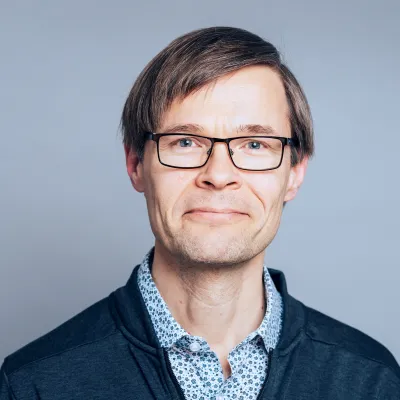In this year, we celebrate the 150th anniversary of the Metre Convention - an international treaty that provides the framework for international collaboration in metrology and the foundation for the International System of Units (SI). VTT MIKES hosted an event at the MIKES Building in Otaniemi on 15th May 2025 that brought together over 70 experts and enthusiasts in the field of metrology. The full-day event featured a variety of talks, discussions, and networking opportunities focused on the past, present, and future of metrology in Finland and globally.
Learnings from history
Martti Heinonen from VTT MIKES highlighted in his retrospective survey that metrology and systems of measurement units have been set up and developed in all civilizations throughout history. When looking deeper into the metrology practices and their relation to society at the time, we can identify the same key drivers for metrology development: well-functioning trade and taxation in expanding multinational empires, safe and good quality building and construction, and a need for understanding more about nature. Giant steps forward in science, industrialization, global trade and the idea of freedom in the 18th and 19th centuries created scientific and political consensus about the need for an enduring international metrology framework and a unified system of units. Because of the solid scientific basis and strong political commitment, the International System of Units (SI) provides today and the foreseen future globally recognized foundation for reliable measurements everywhere. As learnt from history, the system of units needs to evolve with evolving world. For this reason, the SI system was redefined in 2018, and the base quantities were defined with a set of seven physical constants. The next major step is foreseen to take place in 2030 or 2034 with the redefined second. New scientifically demonstrated ways of realizing the base quantities and derived quantities will enable more accurate calibrations in wider operating ranges as requested by industry and scientific communities. At the same time, the development of a digital framework for metrology will enable efficient and secure delivery of calibration data in the digital networks.
Technological Developments and Future Prospects
Tero Eklin from the Finnish Environment Institute (Syke) discussed the shifting demands in environmental measurements and emphasized the growing need for precision and adaptability due to environmental challenges and regulatory changes.
Sami Koskinen from Beamex delved into digitalization trends in calibration practices, exploring how emerging technologies like artificial intelligence and automation are redefining accuracy and traceability in measurements. Kimmo Jokinen from Optofidelity discussed the role of metrology in augmented and virtual reality technologies. He showcased how advancements in optical metrology contribute to the development and manufacturing of VR/AR devices, ensuring immersive experiences and reliable performance.
Anders Wallin from VTT MIKES presented groundbreaking insights on the development of optical clocks at VTT MIKES and other institutes in the world. Shifting from microwave to optical wavelength range enables 100 times better realization of second. The redefinition of the SI second is scheduled for the 2030s to exploit this potential for improvement. Virpi Korpelainen’s presentation on nanometrology underscored the importance of reliability in measurements at nanoscale levels for applications ranging from material science to medical diagnostics. She emphasized that nanometrology is an evolving field with immense potential to contribute to sustainability and innovation.
Education of Metrology in Finland
The afternoon session focused on metrology education and training in Finland, beginning with a presentation by Tomi Pietari of Vaisala, who summarized findings from a survey conducted by the Metrology Advisory Committee. He identified key challenges, such as the need for better training in measurement and calibration methods, measurement uncertainty, and quality systems. Pietari also highlighted a shortage of skilled professionals in the field, emphasizing the importance of recruiting and retaining talent. General discussion followed, including short comment speeches from Erkki Ikonen from Aalto University, Pauli Joronen from Taitotalo, Pekka Hirvonen from Metropolia AMK and Outi Rask from Tampere AMK. The discussions emphasized collaboration between educational institutions, research organizations, and industry to advance metrological competence. It was concluded that metrology education is currently very limited in Finland and should be increased to address future needs of industry and calibration service providers.
Networking and Laboratory Tours
The event concluded with a networking session and group visits to the VTT MIKES laboratories, where attendees explored cutting-edge research and technologies. Poster presentations showcased updates from national metrology laboratories, while coffee breaks facilitated informal discussions.

